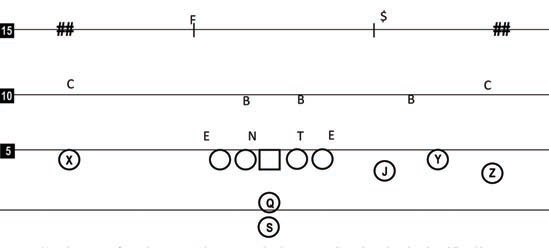

Linebackers and safeties especially might try to cheat up closer to the line of scrimmage in anticipation of a running play.Īnd this is all exactly what a well-timed play action pass will take advantage of.īy faking the run and going to pass, the offense can exploit the defenders guessing run, hopefully sneaking a receiver behind the defense for a big play. The defense will often prep for this, stacking more people along the line of scrimmage during these situations. Similarly, when the offense is close to the end zone, they’ll often like to hand the ball off to a running back for a high-percentage play that could get them across the goal line for a touchdown. On second-and-two, for instance, many offenses will simply look to run the football to gain those two yards to get beyond the first-down marker to gain a new set of downs. Situations where the offense only has to gain a few yards for a first down - or when they’re close to the end zone - are great examples of this. This will be based on a specific down-and-distance situation where the offense would typically call a running play. Let's analyze when the play action pass is more effective and also look at some examples of play action passes.Īnother great time to run a play action pass is during a situation where the defense might rightfully expect the offense to run the ball. While it can be run on any down and any spot on the field, there are certain game situations when it's often more effective than others. The play action pass is the most common "misdirection passing play". Then, the offense will execute the passing play, hoping that receivers are open downfield as the result of defenders biting on the play action and trying to react to what they thought was going to be a run. The quarterback will fake the handoff and pull it back while the running back runs ahead as if he has the ball. Wide receivers and tight ends will release their blocking motion and run their passing routes. The offensive linemen will release and step back to protect against the pass rush. Then, it’ll switch over to a passing play. The quarterback will head toward the running back as if he were going to hand the ball off, and a running back will act as if he's going to take the handoff. Wide receivers and tight ends will act as if they're blocking, too. Offensive linemen will block straight ahead for a step or two. At its base, the play action pass is a relatively simple play.Īll offensive players will begin acting as if the play will be a run.


 0 kommentar(er)
0 kommentar(er)
